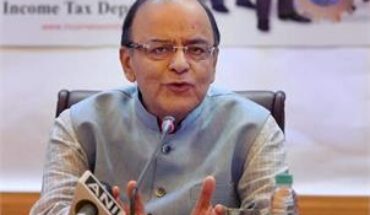Improved retail penetration in Indian Mutual Funds, and increased quality awareness among potential and existing investors of such funds, is expected from a recent extensive survey in India conducted by the Foundation of Independent Financial Advisors (FIFA) and Final Mile Consulting.
This study sought to answer specific questions about concerns of all mutual fund stakeholders like Government, Regulator, Manufacturer, Distributor and Investor, Dhruv Mehta, Chairman, FIFA, told media here about the study titled “An Examination of India Mutual Funds Investors Awareness 2018: a roadmap to improve mutual fund penetration among Indian investors.”
However, India is not yet +ripe+ enough to switch from commission to fee-based regime and SEBI – while trying to introduce free service for retail investors – agreed on the need for increasing awareness and flexibility of advertising for Mutual Funds, he said while pointing out that penetration of mutual funds is still absolutely low (12% to 13% of AUM to GDP) in India, compared to USA (100%), Europe (above 100%), Australia (above 100%) and UK (57%).
(Assets Under Management (AUM) distribution in India is predominantly loaded in favour of urban centres, and the skewed distribution highlights 75% of all independent and institutional advisors (such as banks) being in 20% of the nation’s districts, the study notes.)
 Highlighting FIFA’s efforts in sharing best financial investment practices to all including through doing “pro-bono” work for maids, societies’ watchmen and even factory workers who were” afraid of opening bank accounts in the wake of demonetization,” Mehta said “We had issues with Service Tax and GST and we constantly engaged with the regulator SEBI. This Final Mile study dispelled the myth of ‘India being one of the most expensive countries in regard to mutual funds – when in fact it is one of the least expensive.” Highlighting the need to know about investors’ thinking and fears suppressing their investments in mutual funds, he said this is the first-ever study done on investor behavior within lengths of human science.
Highlighting FIFA’s efforts in sharing best financial investment practices to all including through doing “pro-bono” work for maids, societies’ watchmen and even factory workers who were” afraid of opening bank accounts in the wake of demonetization,” Mehta said “We had issues with Service Tax and GST and we constantly engaged with the regulator SEBI. This Final Mile study dispelled the myth of ‘India being one of the most expensive countries in regard to mutual funds – when in fact it is one of the least expensive.” Highlighting the need to know about investors’ thinking and fears suppressing their investments in mutual funds, he said this is the first-ever study done on investor behavior within lengths of human science.
Kailash Kulkarni, CEO, L&T MF, said 2017 witnessed good and significant growth in mutual funds through participation of retail – even in B and C category of cities and towns, and especially in places not having even related offices. “Today, lots of volatility is being seen and there won’t be shocks for investors. Mutual funds are going into equity and hybrid products. There is Rs 6,650 crores SIP value growth today. Clearly, quality money is coming into the system and even the common man is finding mutual funds to be the right product for them,” he said.
Benis Kumar Moses of Final Mile, which did the survey, noted that out of the 37.5 million potential investors (income tax assessees (ITAs) paying taxes, filing tax returns, having disposable income and capacity to invest) in India, 117 were surveyed (with 48 in-depth interviews) in six cities which revealed “good co-relation with age, besides wealth and portfolio.” The study noted that there were seven barriers on the investor journey from non-investor to sophisticated fee-paying investor and that unfamiliarity with mutual funds was a big barrier for the investors — who were only interested in the returns, he said.
Since establishing Unit Trust of India in 1963, the Indian Government is promoting mutual funds as viable product for retail investors to generate long-term wealth – especially for retirement –in its vision to grow the country’s economy while providing a steady and healthy stream of long-term funds to the capital markets. However, The concern is that further regulation could disrupt modest industry growth and market penetration that SEBI and the rest of industry has worked to cultivate over the past 21 years, according to the study.
 “Mutual funds are a promising channel for retail investors because they are professionally managed; offer investment diversity according to client’s risk tolerance and investment goals; low maintenance investment with relatively high liquidity and low entry barriers. The macro-level benefits of channeling household savings towards capital markets are the release of scarce government resources to critical public projects. On a micro-level, individuals adequately prepared for retirement experience a better quality of life without worry of financial security, while productively pursuing their passions and interests,” the study noted.
“Mutual funds are a promising channel for retail investors because they are professionally managed; offer investment diversity according to client’s risk tolerance and investment goals; low maintenance investment with relatively high liquidity and low entry barriers. The macro-level benefits of channeling household savings towards capital markets are the release of scarce government resources to critical public projects. On a micro-level, individuals adequately prepared for retirement experience a better quality of life without worry of financial security, while productively pursuing their passions and interests,” the study noted.
“SEBI believes that the presence of a commission-based fee structure has led financial institutions and intermediaries to focus on maximizing commission incomes at the expense of the investor. SEBI’s RIA is in line with the desire to take necessary steps to continue protecting the investor. Equity is one of the few asset classes that beats inflation and gives real positive returns. Yet, in the past, investors preferred other asset classes like bank FDs, gold and real estate.”
“Association of Mutual Funds in India (AMFI) reported that equity mutual funds owned by individuals amounted to Rs 3.94 trillion (upto December 2016) – barely 3.7% of the total market capitalization of stocks listed on Bombay Stock Exchange (BSE). Yet mutual funds – which create long-term wealth creation –have not achieved desired penetration levels – because broad-based awareness campaigns and industry changes are rendered ineffective due to ignoring the investors’ thought process and behavioral patterns.”
The study revealed that the three biggest barriers to mutual fund investments are the perception that the asset class is risky/volatile, complicated and technical, and that nobody recommended investing in them. “The Government of India needs to take measures to familiarize investors about equity being a desirable asset class to invest in. Since they are not aware of the feature and benefits of mutual fund asset class, non-mutual fund investors think it’s risky and won’t invest despite long-term wealth creation opportunities. Currently the ‘Know Your Customer’ (KYC) requirement of a Permanent account Number (PAN) card reinforces the perception that mutual funds are for rich people.”
The study highlighted the ‘increasing likelihood of investing in mutual funds as number of dependents increase; and that respondents with no dependents were 41% likely – and those having one dependent being 69% likely — to invest in MFs. “People with wealth but less-earning capacity and fewer dependents find mutual funds less relevant for their long-term goals, but can become an important vehicle to maintain their current level of wealth.”
The study’s scenario of a” participant profiting from selling ancestral land” found the response being: 1) Buying land (21%); Down payment for house (32%); Invest in MF (39%); and Invest in Gold (9%). The reasons for mutual funds investors being dissatisfied included: low returns (61% respondents); returns taking too long (21%), volatility (9%) and technical difficulties (8%). About 82% of mutual funds investors focused solely on ‘returns.’ The most popular response among 1,107 study participants was 44% saying : “I need some advice/guidance before investing.” Investors’ biggest concern is at macro level –being unable to save enough for their retirement. Professional fund management was declared as the most important expectation from investors.
The study’s recommendations included: incorporating designated mutual fund products for some ‘direct benefit transfer (DBT) schemes; simplifying some eligibility/KYC criteria; GOI/SEBI acknowledging role of in-person to interactions between distributor and investor; industry stakeholders strengthening and expanding distributions channels as part of investor-awareness budgets; highlighting tax savings as well as capital gains tax-free status; introduce sublimit for Equity-Linked Savings Scheme (ELSS) in section 80C; expand and deepen distribution channels to increase awareness, access, visibility and familiarity of mutual fund products; One-on-One communication (customize IAPs by segment of income, age, demographics, financial background); communicating advantages of non-equity MF products (debt funds); popularize roadmap to access expert advice (such as websites); design new remuneration model for viability to distributors in servicing high effort, low-ticket size customers.
“SEBI should communicate their world class “checks and balances” within the capital market structure – specifically in mutual funds – for safeguarding investor interests, as this awareness would make the investor more comfortable about investing in this asset class,” the study stated.“
The study also highlighted a comprehensive +Mercer Melbourne Global Pension Index+ report which showed India being ranked “third from bottom” in global rankings while comparing pension systems and standards of retirement savings. This scenario highlights the Indian population being exposed to inadequate retirement savings in the coming decades, and current Government pension systems proving inadequate to handle risks like: Longevity (individuals assessing time-length retirement savings); Inflation (inflation, fluctuation in interest rates on savings).






